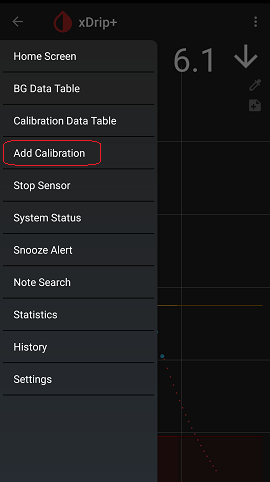xDrip » Features » xDrip Calibration
Current continuous glucose monitoring (CGM) technology measures glucose in interstitial fluid, which differs from blood glucose levels but is correlated. A formula translates interstitial fluid glucose to estimated blood glucose.
Calibration involves providing your CGM with your blood glucose readings, measured with a glucose meter, to help it establish this correlation. Ideally, more calibrations improve accuracy.
Calibrating during rapid glucose changes can degrade accuracy.
The G6 sensor offers factory calibration, eliminating the need for regular calibrations after entering a 4-digit code at startup. This is based on average error studies, but individual variations may occur. If discrepancies arise, you can still calibrate.
Always test with a glucose meter if symptoms do not match CGM readings.
Testing: Test your blood glucose with your meter if symptoms don’t match CGM readings. Calibration is not always necessary with every test.
Calibration: For G6 users, calibration is not required but can be done if readings are inaccurate. Avoid calibrating during rapid glucose changes. Ideally, calibrate when glucose levels are stable. For G5 users or those using no-code mode on G6, initial calibrations are performed without readings. In such cases, use your AGP graph to find times with less fluctuation and start the sensor accordingly if possible.
If you use a G5, you should calibrate twice a day.
If you use a G6, you don’t have to calibrate. But, if you find the readings to be incorrect, you can calibrate.
To calibrate, select Add Calibration from the top left menu.
